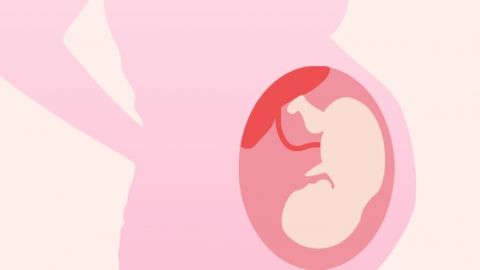What causes a breech position?
Breech position may be caused by factors such as excessive fetal movement space, maternal uterine shape abnormalities, abnormal placental position, polyhydramnios or oligohydramnios, and fetal developmental abnormalities. If any abnormalities are detected, timely medical consultation is recommended. Detailed analysis is as follows:

1. Excessive fetal movement space: When the uterine space in the mother is relatively large, the fetus may move freely within the uterus due to lack of restriction, leading to a breech presentation. Regular prenatal check-ups are generally recommended to monitor fetal position, and posture adjustment or external cephalic version may be attempted in late pregnancy to assist correction.
2. Maternal uterine shape abnormalities: Uterine abnormalities such as bicornuate uterus or septate uterus may prevent the fetus from engaging in a cephalic position, thereby increasing the risk of breech presentation. In such cases, a cesarean section might be necessary to ensure the safety of both mother and baby.
3. Abnormal placental position: Placenta previa or other abnormal placental positions may occupy space in the lower uterine segment, obstructing the descent of the fetal head and resulting in a breech position. Abnormal placental positions may also be accompanied by symptoms such as antepartum hemorrhage and abdominal pain. Close monitoring of placental position changes is necessary, and decisions regarding whether to terminate pregnancy early should be based on gestational age and severity of symptoms.
4. Polyhydramnios or oligohydramnios: Abnormal maternal health conditions may lead to abnormal amniotic fluid volume. Excessive amniotic fluid increases fetal movement range, while insufficient amniotic fluid limits normal fetal rotation, increasing the incidence of breech presentation. Amniotic fluid abnormalities may also be accompanied by fetal growth restriction or other complications. Close monitoring of fetal well-being is required, and delivery may need to be planned in advance when necessary to reduce the risk of complications.
5. Fetal developmental abnormalities: Abnormal development of the fetal central nervous system or musculoskeletal system may restrict fetal movement, thereby increasing the likelihood of a breech presentation. This is often accompanied by fetal structural abnormalities or growth retardation. Prenatal interventions or pregnancy termination may be required after diagnosis.
Pregnant women should maintain a positive and optimistic mindset, follow a balanced diet, engage in appropriate physical activity, undergo regular prenatal examinations, and adhere to professional medical advice to ensure the health of both mother and baby.




